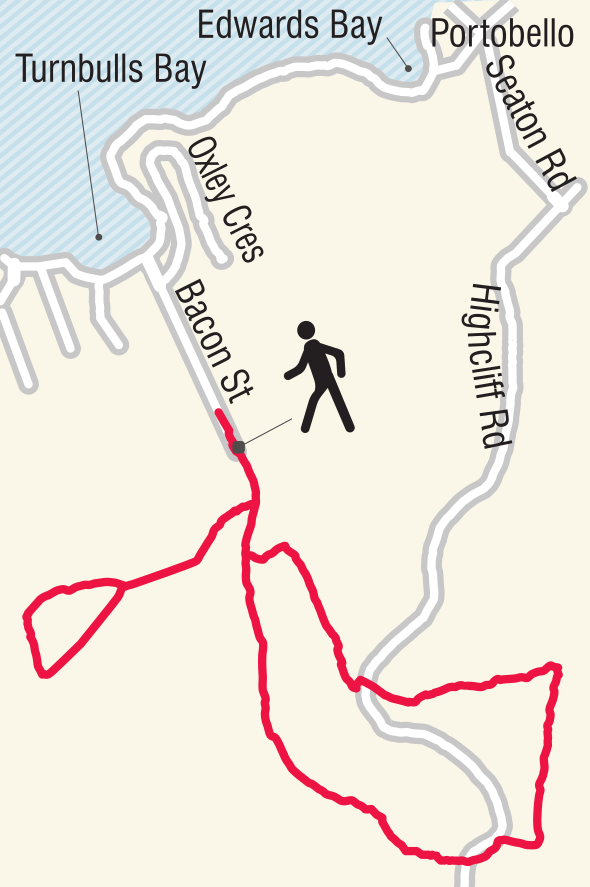
This walk takes you back to the past, but starts off in the future.
It all begins at harbour level, at the end of Bacon St, just past Turnbulls Bay.
First of all you’re greeted by an intriguing hand-made sign pointing down a pixie pathway to a ‘‘Future Forest Walk’’. These days the forest is in its babyhood, 9000 native trees planted through a gully and up the hillside beyond.

Loop back to the yellow-tipped marker poles passing the mature results of STOP’s restoration of Smith’s Creek. These days there must be generations of happy native whitebait and eels spending part of their life in there.
Outside the lambing season of September 1 until November 1 you are free to continue on the full route across farmland, up to the cone. Naturally, Rover and friends are prohibited.
There’s a daunting view up the side of the cone to be climbed. Cross the road, fully warmed up and ready to give it some grunt. The going gets tough, but that’s when the tough get going.
Sticking up like a witch’s hat, Hereweka is visible for miles and is the photogenic model for some famous art.
Hereweka and its weka were part of the healing of a very early peninsula inhabitant. Tarewai was the nephew of the first known Kai Tahu ancestor to arrive in Otago. He lived during a tumultuous time as recent immigrants and previous waves mixed and mingled.

He recovered but needed his weapon back. So he quietly returned to the Kati Mamoe village where one night people were sitting around the fire admiring his mere. To disguise his identity in the dark, Tarewai mimicked the villagers’ speech pattern so he appeared local, was handed his own weapon and ran off into the night.
Post-Pakeha settlement, the area hosted small family dairy holdings. Each clump of macrocarpas marks a settlement site. Such steep, erosion-prone land must have made dairy farming pretty hard.
The Hereweka Harbour Cone Trust, in partnership with the Dunedin City Council, manages the area now, hosting a field day and an annual public hike at the end of each February.

But contemplate this — in the early 1980s there was a proposal to cut two shafts into the side of the cone to mine gold. It’s embedded in the rock which would have meant open pit mining. Which would have meant a 24 hour, 7 days operation, complete with noise and dust. And a four-lane highway.
STOP objected, but the court ruled that the operation may go ahead. Fortunately, Harbour Cone, its biodiversity and the peninsula’s integrity was saved by the fact the operation was eventually deemed uneconomic. These days the most hardcore digging is the trust’s tree planting and University of Otago archaeology students delving down.
Making a loop walk of it, follow the poles down the westerly flank of the cone. You’ll walk on one of the old, steep dairy-farming roads down past an old ruin, the Allan farmstead and forge complex. Across the road the track continues down a fenceline, making a beeline back to the start.
- Clare Fraser












